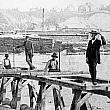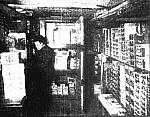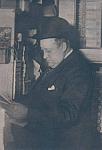Underground River: Fact or Myth?
In 1900 J. M Weston, a well digger with many years experience in Kent County, especially in the vicinity of Grand Rapids, contacted Mayor Perry. Weston said he knew of a practical source of water that could solve the problem of a municipal water supply.
Weston claimed that a part of Grand Rapids was built over a large underground river, hundreds of feet across and varying in depth from 12 to 100 feet. Within this river was a stream of filtered water, soft and of great purity, which if tapped in the right place would yield an inexhaustible supply.
Weston had watched the work of well digging in the city and had made many experiments to verify his theories. In the mayor’s office was a map on which Weston has roughly platted the course of the river, as well as that of several smaller streams that have been traced in the work of sinking wells.
According to the expert the main stream enters Grand Rapids from the east, running directly beneath Fisk Lake. From there it takes a northerly course, sweeping beneath the marshes directly north of the lake, continually verging northwest until it reaches the Grand River about a mile north of the Soldier’s Home.
From here it runs in a course parallel to the river to the vicinity of the Bailey farm, the area known as Bailey Springs, where it rises near the surface and empties into the river. Weston does not mean that the entire river empties through the surface streams on the farm, but believes that the greater part of the mouth of the stream is underground.
Weston also believe that the Bailey farm is the site of another underground stream that runs from Crooked Lake (now Dean Lake) and Spring Lake northeast of the city.
So confident is Weston of the destination and course of the steams that he is willing to stake out their courses above ground, specifying as he goes the depth and widths for every foot of the way. Mayor Perry is considerably impressed by the lucidity of the argument and support for the theory that Bailey Springs presents much greater resources that those shown on the surface.
Bailey Springs was always in the running with Lake Michigan and the Grand River as a water source for the city in the early 20th century.
Excerpted from the November 21, 1900 Grand Rapids Herald, page 5

 facebook
facebook






